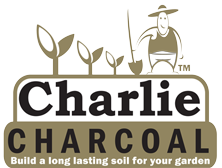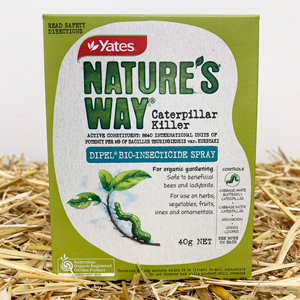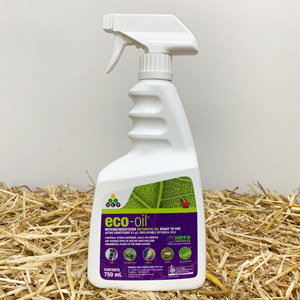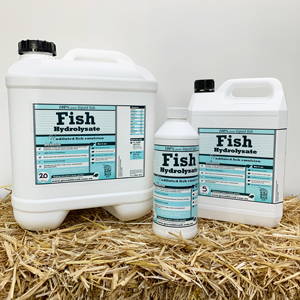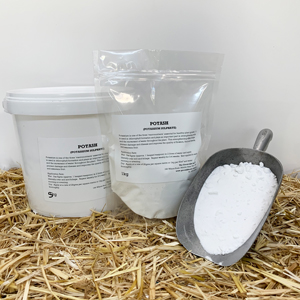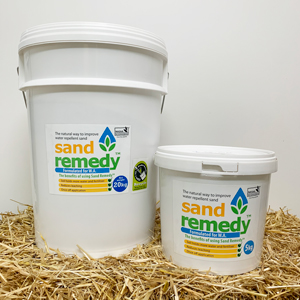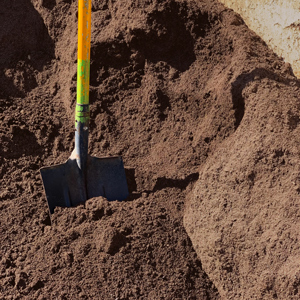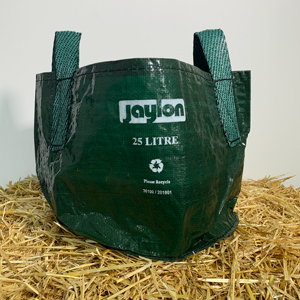| item(s), Total: $0.00 View Cart |
| Shopping cart is empty. |
Tomatoes
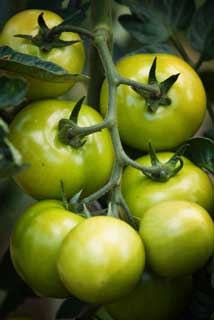
Growing Tomatoes
The latin name Lycopersicon esculentum translates to 'edible wolf peach'. Strange but true. They originated from South America and grow very well in many parts of the world with mild, temperate or tropical climates (depending on variety). And speaking of varities, there are hundreds of different varities available. If you want to blow your mind, check out the varieties available at www.edenseeds.com.au.
Tomatoes are often categorised into 'Determinate' and 'Indeterminate' groups.
Determinate tomatoes often (but not always) have a more bushy growth habit, and tend to require minimal staking. They often bear fruit all at once, which is handy if you wish to grow tomatoes for bottling or preserving.
Indeterminate tomatoes are often more vine-like in growth habit and require staking or training. They tend to bear fruit over a longer period here and there, which is great for most home gardeners who like to have tomatoes on hand for salads over summer.
Both varieties have their good points, and it may be a good idea to select a couple of each type to grow.
To Stake or not to Stake
Staking a tomato plant and keeping it tidy has the advantages of increased sunlight and airflow around the plant, making them less susceptible to some fungal type disease. It also makes working around the plants easier and accessing fruit to pick. However, it is certainly not essential. Allowing plants to sprawl has advantages too - namely fruit tends to be more protected from sunburn, and ripening is often a little more staggered. It can be either fun to play 'hunt the ripe tomato' or frustrating - depending on your point of view.
To Prune or not to Prune
Some gardeners swear that to grow the best tomatoes you must pinch out lateral growth to keep the vine strong and to get a greater crop. Others selectively prune foliage to allow greater sunlight and air circulation. Other gardeners don't bother trimming anything. Again - both methods work. Do what works for you.
Peter Cundall is a staker, and a tip pincher-offer, so there you go. But I also bet his garden is very tidy and he never leaves his tools out in the rain. Just a guess.
General Growing
Tomatoes like a rich, improved soil and are hungry feeders. Don't over feed them nitrogen rich fertilisers (eg. chicken manure) as this encourages more leaf growth over fruiting. Use well rotted sheep and cow manures, and give them potash once a month to encourage flowering and fruit set. Do mulch plants over summer and ensure regular watering. If the soil is allowed to dry out, plants will stress and be more susceptible to problems.
Pots or Garden?
Tomatoes grow very well in pots or grow bags which are large enough (approx. 20 - 30L) so even small courtyard gardens can be productive! If you have had problems with any soil borne disease or nematodes, perhaps try growing in pots for a season or two. If you have limited space, cherry tomatoes are absolutely the most productive you can grow.
Diseases
Unfortunately tomatoes are susceptible to a number of pests and diseases, including:-
Blossom End Rot
This is caused by inconsistent watering, as plants lose the ability to take up calcium in dry soils. Ensure watering is regularly timed, and stick to a routine.
Wilt Disease
When young plants show signs of wilt disease, there is often nothing that can be done to bring them back. This is a virus that can be spread by sap sucking insects (like whitefly or thrip), or can sometimes be soil borne. Do not compost plants, as the virus can spread throughout the garden this way.
Ensure you keep insect pests under control to avoid spread of the disease.
Fusarium wilt and Verticillium wilt are nasty soil borne viruses that can come from contaminated plants, seeds, stakes and gardening equipment. It can be very hard to eliminate once you have it in your garden. Strategies include crop rotation, using wilt resistant varieties, not saving seed from affected plants, and destroying (not composting) any infected plant material. In extreme cases growing in pots may be the only solution.
 Sunburn
Sunburn
The ideal ripening temperature for tomatoes is around 25 degrees. In our very hot summers, fruit can burn. Provide shade for the hottest part of the day and don't remove burnt foliage, as this still serves to protect fruit.
Nematodes
These are a symptom of poor, sandy soils. If you have healthy, humus rich soils the huge range of beneficial microbes found therein prey on nematodes and keep their numbers in check. Only if things get out of balance are root knot nematodes usually a problem. Their numbers can be reduced by growing mustard as a green manure crop over winter, and watering in molasses to the soil at 500gm/m2. (The molasses increases bacteria numbers which feed on nematodes.) This should be a once-off treatment assuming you then work to improve your soil before planting future crops.
Solarisation over summer also works - lay clear or black plastic over the soil and weigh down the edges. Leave for at least a month over the height of summer. Note that this has a detrimental effect on all soil micro-organisms! You will need to work to recolonise the soil with lots of healthy organic matter and fish hydrolysate when next preparing for planting.
French and African marigolds grown in high numbers and left in the ground for at least two months also help with nematode control - they exude a natural chemical found to be toxic to nematodes. Plant them very thickly and enjoy their amazing colour while they do their work!
Tomato Bugs/Shield Bugs
Hand pick or shake these off into buckets of water mixed with a little detergent (which suffocates them). Use a white oil or organic soap spray directly on the insects. Harlequin bugs group together in the early morning so if you can see clusters of them you can effectively wipe out a large population at once.
Caterpillars/Budworm
Hand pick if you can find the tiny ones (chickens love them!), use Dipel for effective treatment. Moths lay eggs on underside of leaves (squash them), and the hatchlings feed on leaves a short while before burrowing into fruit at an early stage of development. Using Dipel when flowering is recommended, however you will need to re-apply after rain. Garlic spray will work as a deterrent for many insect pests, but you need to use regularly.
Companion Planting
Tomatoes benefit from having asparagus, basil, carrots, chives, mint, nasturtium, parsnip, onion, corn, borage, parsley, marigolds and celery as companion plants.
 Growing Winning Tomatoes! - by Damo Mansfield
Growing Winning Tomatoes! - by Damo Mansfield
Every summer, GLSC holds a tomato competition. It's a bit of fun to encourage gardeners & it's always great to see the huge variety people are growing in their gardens. From our first contest in 2012, the winner was Damo Mansfield, with his Costa del Marmande tomato (pictured here).
From doing a little bit of research about this variety, it was one of Burke's Backyard taste favourites too, and is well reknowned for its superior flavour. Damo has very kindly provided us with growing tips for what HE does to achieve a great tasting tomato crop. He has also sent in some recent photos of his wonderful garden for us to share with you. Enjoy!!!
Growing Tomatoes with Damo
When?
Surprisingly early!, in late winter I notice self sown tomatoes germinating in my veggie patch from the previous year. I wait 2 weeks to be sure to be sure, and then plant my seeds.
Where and how to plant?
 I select a warm sunny spot that has rich soil from a previous crop. I make a small furrow with my Ho-mi (see photo) about 25 mm deep and sow the seed along it quite thickly. I then cover the soil back over the seeds with a pinching action with my fingers; this leaves a fluffy windrow of soil over the seed that is easy to see when watering and does not form a crust to stop germination. A thin layer of Green Life Soil Co veggie concentrate placed over the seed helps to keep them well fertilized and happy. (Note: sieve it first to remove stones or chunks.)
I select a warm sunny spot that has rich soil from a previous crop. I make a small furrow with my Ho-mi (see photo) about 25 mm deep and sow the seed along it quite thickly. I then cover the soil back over the seeds with a pinching action with my fingers; this leaves a fluffy windrow of soil over the seed that is easy to see when watering and does not form a crust to stop germination. A thin layer of Green Life Soil Co veggie concentrate placed over the seed helps to keep them well fertilized and happy. (Note: sieve it first to remove stones or chunks.)
As I have sown the seeds very thick, I then thin out the germinated seeds to about 100mm apart along the row, liquid fertilizer of fish emulsion and seaweed keeps the plants thriving, Attention to detail here means healthy seedlings and a good crop later.
Transplanting
I plant out when the seedlings are about 100mm tall into soil that has had Veggie Concentrate rotary hoed into the soil. Place them 600mm apart in rows 1200mm apart, the plants need plenty of air and sun to keep fungal diseases away. Mulch with pea straw to stop the soil splashing onto leaves, which is a prime source of disease.
Growing
As the plants grow, I progressively remove the bottom leaves to stop fungal diseases getting a hold. I prune the plants to 2 main leaders and keep them tied to a 2400mm star picket, any shorter than this and you’re not growing your tomatoes well enough! A pyrethrum spray will keep any nasty bugs away if used with caution. I pick the tomatoes as ripe as I dare, as sometimes fully vine ripened fruit will attract fruit fly.
A splash of garden lime on the leaves will keep fungal diseases away.
We are grateful to Damo for sharing his tips with us - thank you!!! And - in case his "green thumb" status was in any doubt - here are some more photos from his garden. From left to right: Carrots and celery growing together, Parsnips and peas together, and finally a strong crop of green manure - almost ready for slashing and turning in.



So if you've never grown your own Tomatoes - what are you waiting for? It's easy, and fun - so call in and see us and get started on growing YOUR own winning tomatoes now! Keep an eye on our newsletters December/January for announcements about the next Tomato Competition we run.
Resources for Growing Organic Veggies & Herbs:
| item(s), Total: $0.00 View Cart |
| Shopping cart is empty. |

